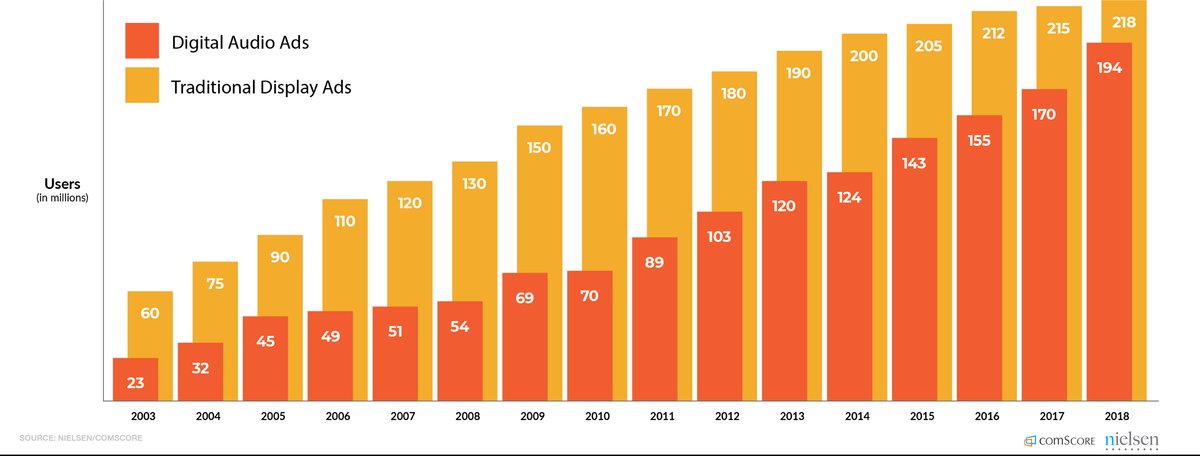Commentary
Can You Hear Me Now? Why Audio -- Not Voice -- Is Already The Next New Thing
- by Joe Mandese @mp_joemandese, November 12, 2018
In the battle of media format dominance, video still commands much of Madison Avenue’s attention, as well as its highest CPMs, but audio is ascending again, thanks to the ad world’s obsession with emerging voice-activated technologies, especially smart speakers and the ilk.
Personally, I’m not sure how much people ultimately will want to talk to their media, but they absolutely still like listening to it. That’s especially true when they’re on the go and using a mobile device, where audio formats remain the No. 1 form of media consumption.
The problem for media buyers is much of that audience opportunity has been fragmented, decentralized and unstructured from a programmatic point-of-view. With the exception of audio’s big two -- Pandora and Spotify -- and a burgeoning marketplace of ad networks compiling podcast audiences, it’s been difficult for advertisers to tap into it.
Now, thanks to a startup incubated by old school radio and TV rep Katz, there’s a third solution.
advertisement
advertisement
Aptly named Audiology, the new programmatic audio media-buying platform launched late last year and has been working in conjunction with Katz to create a simple interface that is easy to research, plan and buy. It does for streaming radio audiences what big programmatic platforms already have done for display and video.
“When you talk about online radio, there have been just two gold nuggets -- Pandora and Spotify. Audiology allows us to break those barriers and lets us access all the mom-and-pop radio people are listening to,” explains David Feman, vice president, Publicis’ Spark Foundry unit.
Feman says Audiology has all the bells and whistles necessary to efficiently buy media programmatically, but says it’s real innovation is in old-school blocking and tackling. It establishes relationships to represent the disparate marketplace of local radio stations streaming their audio services.
Aside from creating a competitive alternative for Pandora and Spotify, Feman says the most important reason for using the platform is its ability to reach audiences streaming local radio services.
In other words, it enables advertisers and agencies to do what analogue media reps have done so efficiently: organize and centralize the ability to plan, buy and reach radio audiences with one call. Of if you prefer, the push of a button.




